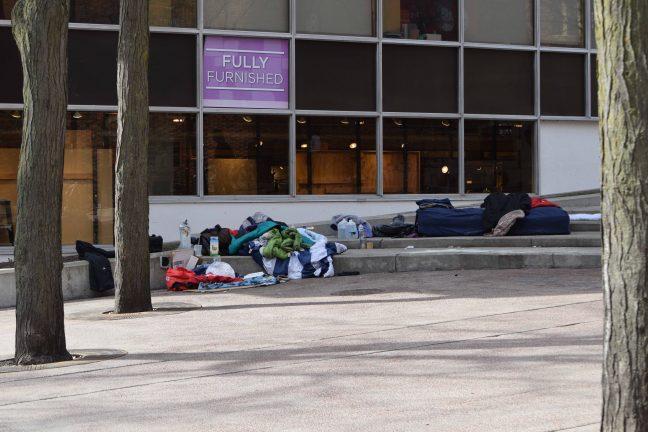There are an estimated 855 homeless people living in Madison. To try to help individuals experiencing homelessness, the City of Madison recently announced they have selected a location for a new permanent homeless shelter.
Their plan aims to lessen the difficulty for people experiencing homelessness in Madison and give them “safety, dignity and opportunity.” While substantial support for people experiencing homelessness is a productive initiative, it is important to look into whether this potentially $9 million investment fully addresses the problems it is trying to solve.
The main difference between this initiative and past programs is that it aims to set up a permanent location for homeless services. Multiple past homeless shelters were temporary and in churches, which limited the space available and made it cumbersome for people to receive the services these shelters provided.
Creating a permanent space is important for a homeless shelter because it covers a wide range of homeless situations. It not only helps people who are unable to work have a permanent place to stay while they transition to another form of housing but also creates consistency for those experiencing intermittent or temporary homelessness.
In the United States, the Department of Housing and Urban Development defines two types of homelessness — chronic and temporary. If someone is chronically homeless, this means that they have been homeless for at least 12 months out of the last three years. Outside of this range, people are considered temporarily homeless by the government.
The first problem a permanent space solves is that it creates a consistent location for people who are chronically homelessness or have mental health issues. If someone is unable to work, this permanent and large facility allows them to get the food and shelter they need so they don’t have to live on the street.
In addition, this project would also help people that are temporarily homeless. According to Homeless Law, a National Law Center on Homelessness and Poverty, of the 2.5 to 3 million people who experience homelessness each year, over 1 million worked part-time or full-time jobs. This means that though they are able to work, they became homeless because they suddenly lost their job, were evicted or lost their housing for a period of time.
Stress is also associated with decreased ability to correctly analyze complex decisions, problems with learning and lower mental capacity. A permanent homeless shelter will give the homeless population some sense of certainty to deal with these stresses. It will provide a place to stay and get food but also decrease the stress of that time so they can get back on their feet and develop a more long term strategy to regain housing and a stable job.
Based on what has been announced so far, the shelter is a step in the right direction. But, with this money, the city should also prioritize rehabilitation and job training so the people that come into the homeless shelter are not only sheltered but can also regain dignity and self-sustainability.
Services aimed at helping people find housing and financial stability need to be tempered using research about the most effective methods, which can aid them in becoming self-sustainable in the long term. At the moment, unfortunately, Madison and many other communities across the country are using suboptimal techniques in helping people out of homelessness, such as the Housing First Model.
There are a few problems with the Housing First Model and other similar homelessness prevention techniques that need to be considered when trying to lift people out of homelessness. The biggest one is that housing doesn’t collect enough data on those receiving the subsidized apartment or house. This gap — which might fail to document drug addictions, employment problems or other matters of personal history — means the model does not provide holistic assistance to people experiencing homelessness.
People experiencing homelessness who are addicted to drugs are the main group hurt by this housing model. According to a study out of Ottawa, Canada, when drug-addicted individuals were given housing and specific care through the Housing First Model, the group they were compared to — who received standard care from the community — “had a greater increase in total quality of life” after a two-year follow up.
Though extra money was given for the Housing First initiative compared to the standard care for the community, this means standard care was actually more effective at increasing the quality of life for homeless people with substance abuse issues.
This does not mean, however, that Madison shouldn’t try out different techniques to get people into housing and permanent housing stability, as there are some methods that could be more effective than Housing First.
One is contingency-based housing, also called the “Treatment First” method, where people are held to certain standards to get the free or reduced cost housing. This method has been shown to reduce drug use and be more effective than the Housing First in reducing homelessness over the long term. This is because, as some experts hypothesize, people regain some dignity as they earn what they are being given over time.
Overall, this initiative by Madison is positive and should hopefully lead to helping more people in our city. But, when considering the next steps and programs used to help people get out of homelessness, Madison should be careful to look at the available research and literature on the most effective methods for helping homeless people return to the workforce and sustain full lives.
Jonathan Draeger (draegerrrr@gmail.com) is a freshman studying economics and pursuing a certificate in German.


